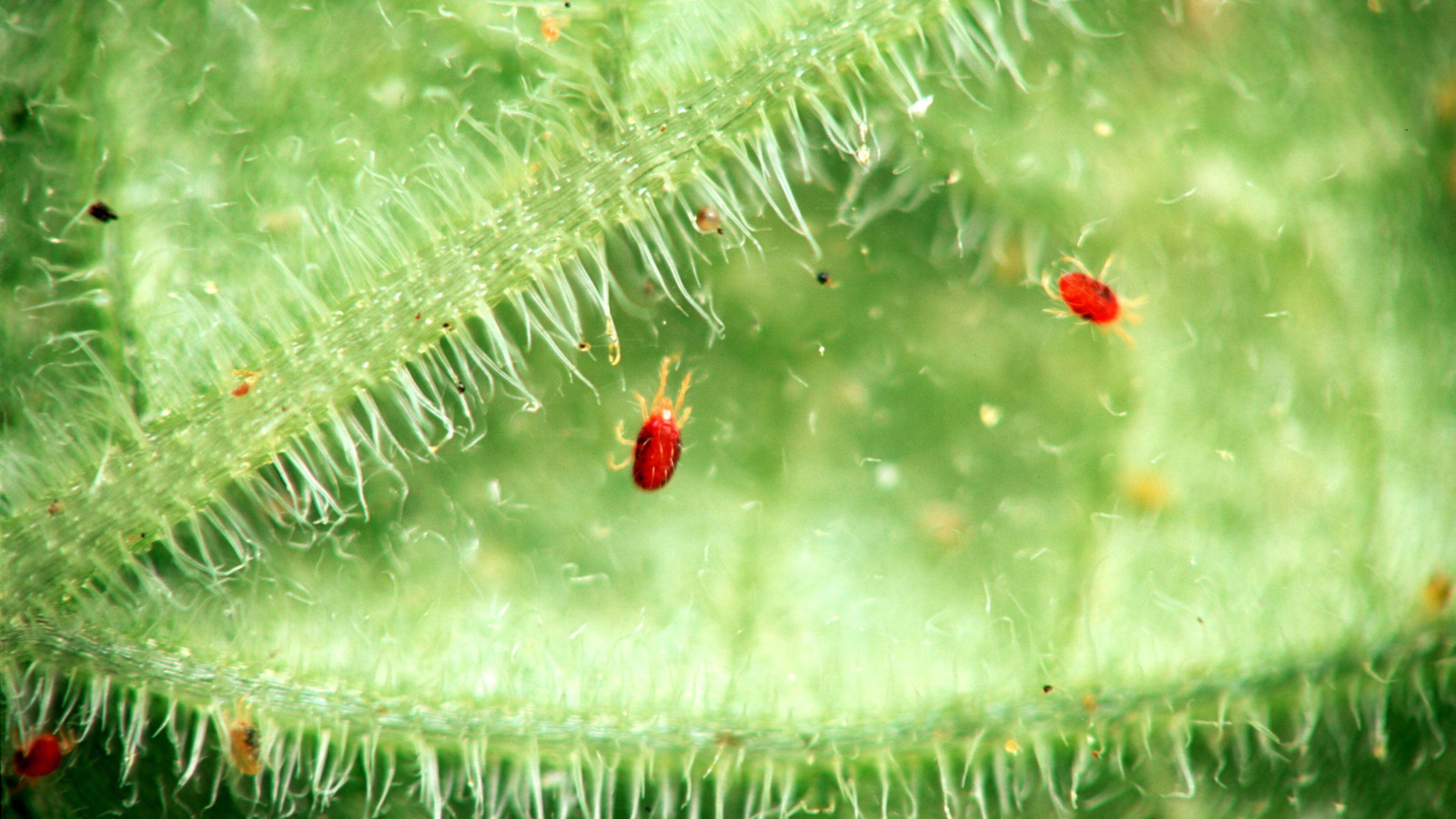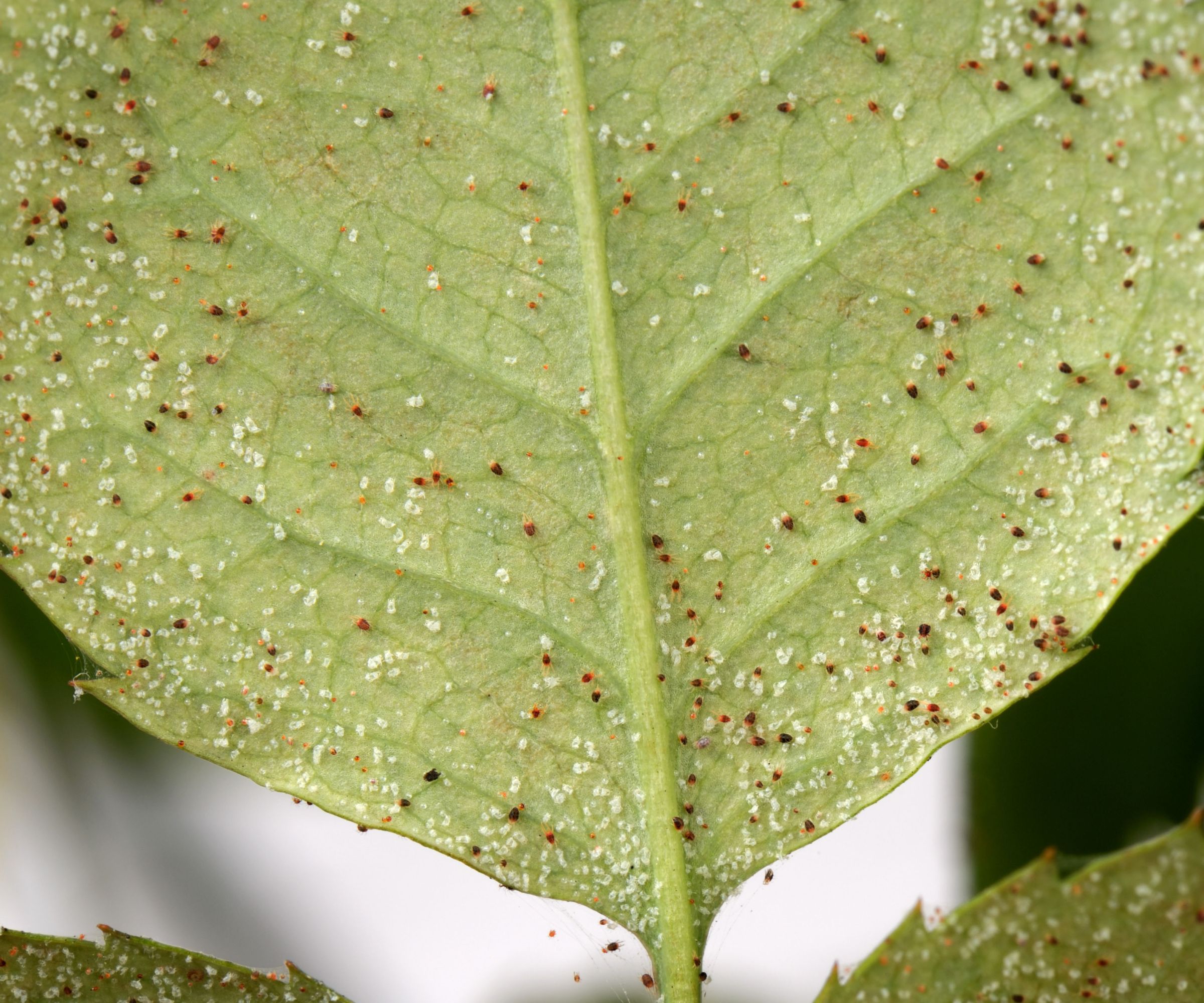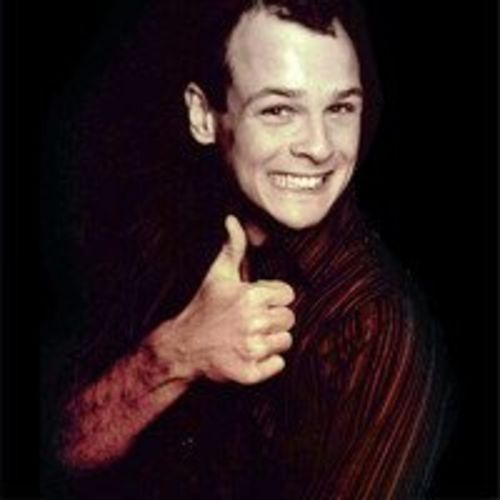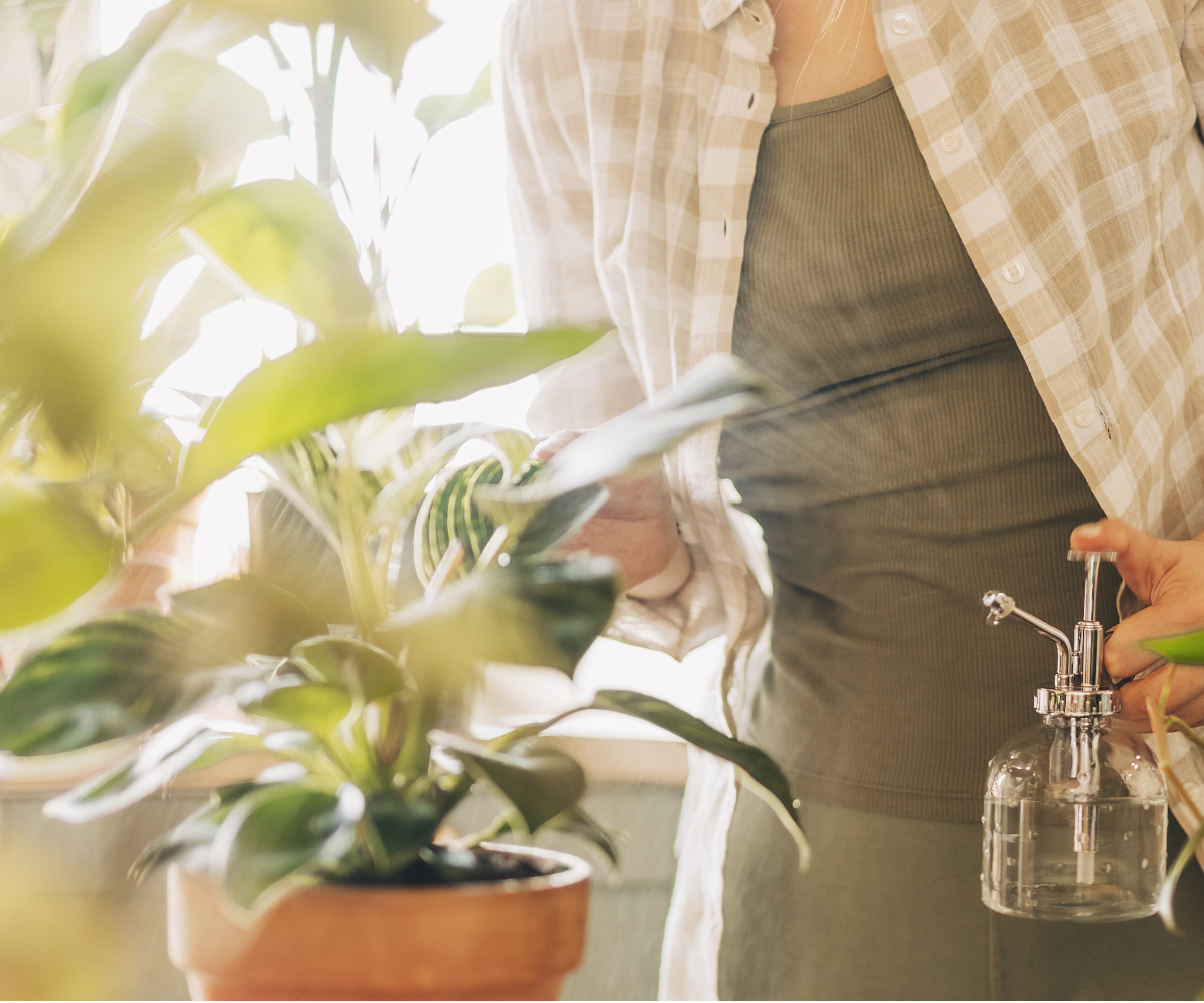How to get rid of spider mites on houseplants – 5 expert methods
These small red pests will quickly spread and turn your entire houseplant yellow if you don't stop them


My houseplant collection is forever growing and I've learnt the hard way that the more plants you bring into your home, the more pests you're likely to come across. Spider mites, for example, are little red spider-like bugs that are often found outdoors on fruit and vegetable plants. While you might think this means your indoor plants are safe, spider mites are pesky little critters that will also take up residence on a number of houseplants.
Even if you've already mastered getting rid of spider mites outdoors, dealing with them indoors can be a different ball game - even the easiest indoor plants have specific needs that need to be taken into consideration when dealing with pests. It's essential to get on top of a houseplant spider mite problem if you start to notice these little bugs on your plant's leaves because they'll otherwise leave your plants discolouring and dying.
With so many pest control hacks coming and going, it's hard to know where to get started with effectively dealing with pests. That's why I've spoken to pest control experts who have shared their top tips for getting rid of spider mites on houseplants.

5 ways to get rid of spider mites on houseplants
Although tiny, spider mites can cause substantial damage to houseplants by using their mouthparts to pierce and suck on leaf cells. It leaves foliage turning yellow and dying off, so the sooner you act on a spider mite problem the more likely you'll save your precious houseplants. Here are 5 ways to get started with getting rid of spider mites on houseplants, recommended by experts.
1. Isolate your affected plants

The first thing to do whenever you spot common houseplant pests is to isolate the affected plants and prevent the problem spreading. Spider mites in particular multiply at a rapid rate and will soon take up residence on neighboring plants.
It's wise to keep affected plants in a large space of their own space, such as a conservatory, where you can then deal with the pest problem while protecting other indoor plants.
'We always recommend that people isolate new plants for two weeks before introducing them to your collection to ensure they are pest-free,' notes Derek Bye, owner of the houseplant store Gold Leaf Botanicals.
Design expertise in your inbox – from inspiring decorating ideas and beautiful celebrity homes to practical gardening advice and shopping round-ups.
Keeping new plants in isolation prevents new pests being introduced and allows them to be dealt with before being places with the other plants you have in your home. This also a good thing to do to prevent pests when you bring houseplants back indoors if you have given them some time out in the sunshine.

As the owner of Gold Leaf Botanicals, I bring a wealth of knowledge and passion for all things green and growing. With over 5 years of experience in all levels of the house plant industry, I specialize in plant care, indoor gardening, and sustainable practices. My expertise ranges from nurturing houseplants and exotic species to creating lush urban jungles in any space - home, office, commercial.
2. Use a soap solution

Just like getting rid of gnats in plants and getting rid of aphids on houseplants, sometimes using sprays can be the most effective solution. This is especially true if you are dealing with a large population of spider mites that you are struggling to get rid of.
'To suffocate and kill the mites, spritz the plants with a mix of mild dish detergent and water,' notes Jana McDaniel, pest control expert and founder of First Saturday Lime. 'To protect the plant, make sure the soap is completely removed after a few hours,' she adds.
It may be obvious to say, but using soap and chemicals on plants can have negative effects. Make sure to only use them moderately and if you're using a bought insecticide, like this insecticidal soap from Amazon, always read the manufacturer instructions for use.
You can make an effective homemade bug spray with a range of items you already have at home.

Jana is a pest control expert and founder of First Saturday Lime, an eco-friendly pest control company. She has grown up tending to gardens and animals and now advises on gardening matters.
3. Keep humidity levels high

Another way to get rid of spider mites, and even keep them away for good, is by increasing humidity levels for indoor plants. This is because spider mites thrive best in drier environments.
'Spider mites love dry indoor environments, especially during winter when the air is less humid,' notes Derek. 'Keep the humidity levels high around your plants. Misting plants regularly or using a humidifier can help,' he adds.
There are plenty of ways to boost humidity for your plants, as Derek mentions. Try using this plant mister from Walmart or this humidifier from Amazon.
This will work especially well for tropical indoor plants that thrive in higher humidity, but take care not to create a too-humid environment for those plants that require drier air. It's best to first research your specific plant's care requirements before deciding to boost humidity levels to prevent any harm to their health.
4. Use beneficial insects

If you're looking for more organic means of pest control, opting for beneficial insects to take care of the spider mite population for you is an effective solution.
'Just like in agriculture, introducing natural predators like predatory mites can help control spider mite populations,' says Derek. 'They are microscopic, and don't harm or spread among your plants. At our plant shop we use beneficial insects as our main line of defense,' he explains.
You can purchase a range of beneficial insects online, like these nematodes from Amazon and these predatory mites from Amazon. Products like these often involve mixing them in a water solution before watering your houseplants.
Just like using pest sprays, always follow manufacturer instructions for the product you're using.
5. Clean your houseplants regularly

For long-term spider mite control, keep on top of cleaning your houseplant leaves. Not only will this keep pests away, it will also help remove any dust your houseplants capture and leave your plants looking brighter and healthier.
'Check and clean your plants frequently,' says Jana. 'As an added precaution, make sure your essential gardening tools are clean to minimize cross-contamination,' she adds.
You can easily clean houseplant leaves with water and a soft cloth, like these microfibre cloths from Walmart. Just take care to wipe foliage carefully to avoid any damage.
'You should also keep the growing area clean and free of dust, as mites thrive in dusty conditions,' notes Derek.
FAQs
Why are there spider mites on my houseplants?
Spider mites can make their way onto houseplants in a few ways. For example, it might be that you have bought a new plant that is already infested and has now spread to your other plants. Having an open window also allows access for spider mites. Of course, your plant may also have attracted spider mites because it has improper growing conditions, such as being left to dry out and or growing in lower humidity levels. No matter how your houseplant got spider mites, you should take the right precautions to get rid of them and stop them spreading to your other indoor plants.
Should I cut off houseplant leaves with spider mites?
It can be a daunting thought to chop off beautiful houseplant leaves, but sometimes it's the best way to solve a pest problem quickly. While it isn't essential to cut away all affected houseplant leaves, those that are badly infested by spider mites should be pruned away to stop the problem spreading further. This will be better for your plant in the long-term and will help it bounce back from spider mite damage sooner. Always clean your pruning tools after use to avoid passing on pests and diseases to other plants.
Getting on top of a spider mite problem early can save your plants from completely being taken over.
If you're nervous about tackling your pest problem, read up on pest control mistakes to avoid so you can ensure you're carry out pest control effectively without any harm to your home or plants.

Tenielle is a Gardens Content Editor at Homes & Gardens. She holds a qualification in MA Magazine Journalism and has over six years of journalistic experience. Before coming to Homes & Gardens, Tenielle was in the editorial department at the Royal Horticultural Society and worked on The Garden magazine. As our in-house houseplant expert, Tenielle writes on a range of solutions to houseplant problems, as well as other 'how to' guides, inspiring garden projects, and the latest gardening news. When she isn't writing, Tenielle can be found propagating her ever-growing collection of indoor plants, helping others overcome common houseplant pests and diseases, volunteering at a local gardening club, and attending gardening workshops, like a composting masterclass.